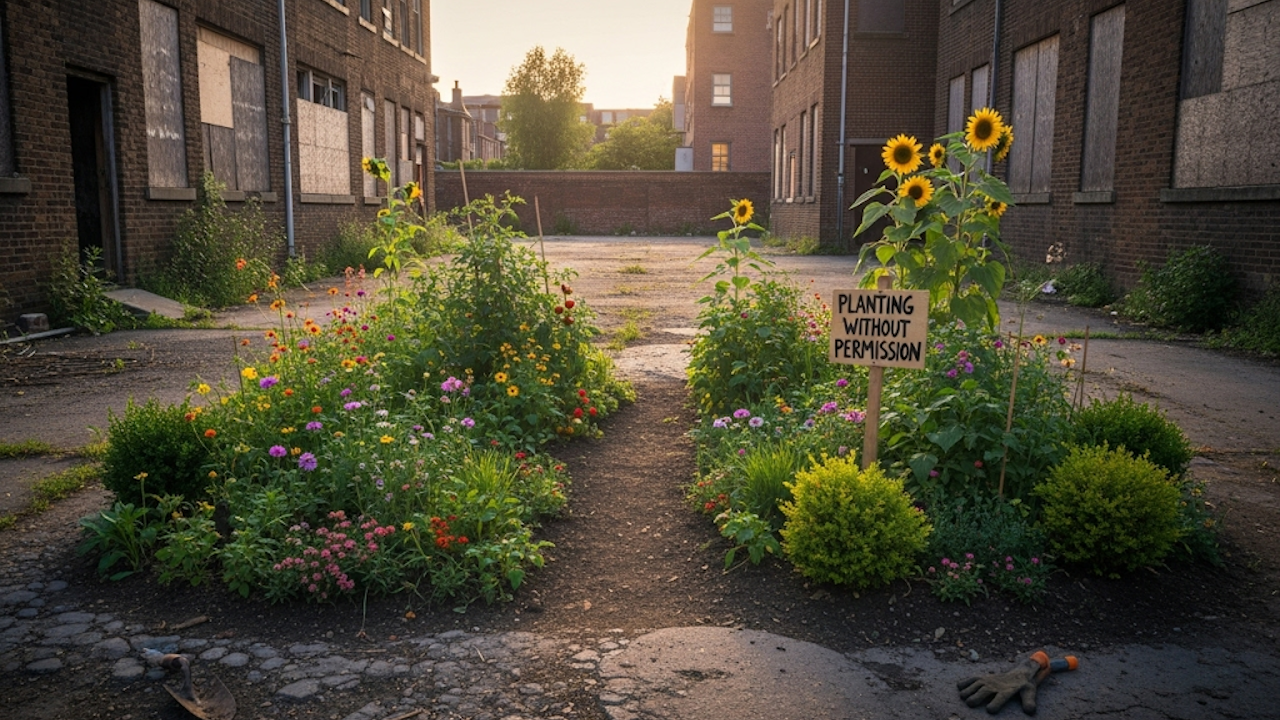Guerrilla gardening, the act of cultivating plants in public or private spaces without the legal right to do so, is a practice that exists in the gray area between civil disobedience and creative urban renewal. It’s a quiet revolution waged with trowels and seed packets, transforming neglected plots of land into vibrant, green havens. This isn’t about grand political statements or violent confrontations, but rather a gentle, persistent act of reclamation, a way for individuals to take back control of their immediate environment and contribute to a healthier, more beautiful city.
The movement has deep roots, with its origins often traced back to the 1970s and the social and environmental activism of that era. One of the most famous early examples is the Green Guerillas of New York City, who in 1973 began throwing “seed bombs” filled with fertilizer and flower seeds over fences and onto abandoned lots. Their aim was to brighten up the bleak, concrete landscape of the city’s poorest neighborhoods. This simple, yet effective, method of dispersing life and color became a hallmark of the movement, a symbol of hope in an otherwise desolate urban environment.
Guerrilla gardening today takes many forms. It can be as simple as planting sunflowers in a neglected tree pit, or as ambitious as converting a disused railway siding into a flourishing community garden. The common thread is the element of illegality, a quiet defiance of ownership and a belief that green spaces are a public good, regardless of who owns the title to the land. Proponents argue that the practice is a form of environmental activism, a way to combat urban blight, improve air quality, and provide habitats for pollinators. By creating these pockets of biodiversity, guerrilla gardeners are not just making a space look better; they’re also contributing to the ecological health of the city.
The ethics of guerrilla gardening are a subject of ongoing debate. Critics argue that it is a violation of property rights and can be a nuisance, potentially introducing non-native or invasive species, or creating maintenance issues for property owners. There’s also the risk of gardeners getting injured or facing legal consequences. However, supporters counter that the benefits to the community often outweigh these risks. They see it as a way to address a systemic failure: the lack of accessible, well-maintained green spaces in many urban areas. They believe that if the city or property owners aren’t going to care for the land, then the people should.
The future of guerrilla gardening is uncertain, but its spirit of creative defiance and environmental stewardship is likely to persist. With increasing urbanization and growing concerns about climate change and food security, the act of planting something, anything, in a neglected space is more relevant than ever. Whether it’s a spontaneous act of beautification or a carefully planned project, guerrilla gardening represents a powerful desire to connect with nature, to build community, and to make the world a little greener, one secret garden at a time. It’s a testament to the idea that a single person, with a handful of seeds and a little courage, can make a meaningful and lasting impact.

